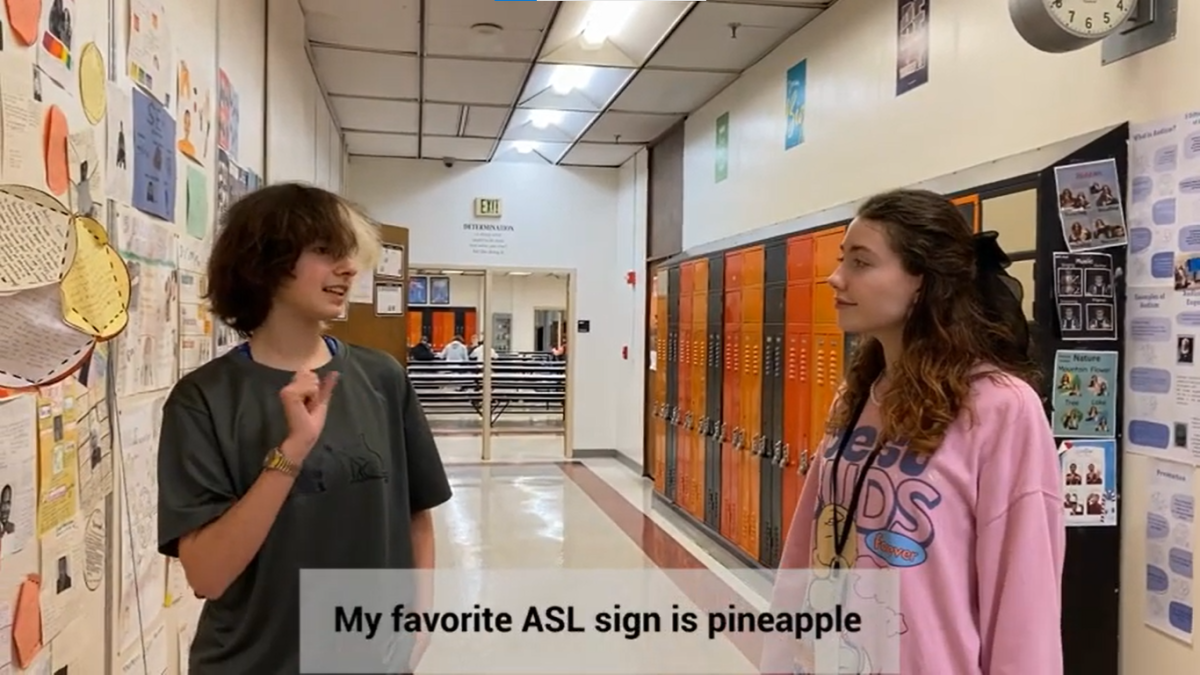By Maria Gallucci
InsideClimate News
(MCT)
For decades, California has been the engine of growth behind America’s sputtering clean energy economy _ adopting groundbreaking clean air and climate policies as federal efforts lagged behind.
The hope was that California’s initiatives would become the template for a national law to slow global warming.
That hasn’t happened yet _ and it isn’t likely to over the next four years. In his second term, President Barack Obama faces the same divided Congress that rejected carbon-reduction targets and a price on carbon dioxide emissions, two cornerstones of California climate policy.
But an Obama White House provides California a key federal partner that wants to regulate global warming emissions from power plants and cars and won’t interfere. Steady support from the top might encourage other states to copy or join California’s pioneering initiatives, according to policy experts and advocates, which only helps the Golden State.
“I can imagine a set of states deciding to take on something like California’s program several years into an Obama administration, having warmed up to the idea of greenhouse gas regulation and having seen it work in practice,” said Cara Horowitz, executive director of UCLA Law School’s Emmett Center on Climate Change and the Environment.
California’s clean economy is driven by at least four sweeping policies: an economywide cap-and-trade program that puts a price on carbon pollution; a low-carbon fuel standard that limits the sale of carbon-intensive fuels; a 33 percent renewable electricity standard; and rigorous clean-car mandates for automakers.
Some of those are brand-new, and many state and federal officials will be watching closely to see if the policies reduce heat-trapping gases while creating new business opportunities, rather than causing electricity price spikes and job losses, as critics contend.
Here’s a rundown of the policies, and a look at how the second Obama administration could help them along.
Cap and trade: Removing the stigma
After six years in the making, California is set to launch the first auction of its cap-and-trade program on Nov. 14.
The program is the hallmark of California’s global warming law, AB 32, which requires the state to cut greenhouse gas emissions by 30 percent by 2020 and 80 percent by 2050.
Regulators will set a ceiling on CO2 emissions from utilities, oil extractors and fossil fuel-burning factories and require them to pay for their pollution by buying carbon allowances in quarterly auctions.
In year one alone, the program is expected to generate between $660 million and $3 billion in auction proceeds. By 2020, cap and trade could send $8 billion into state coffers annually.
California’s program is the nation’s second cap-and-trade system and the first to target carbon polluters across the economy. The Regional Greenhouse Gas Initiative limits emissions from power plants in nine participating Eastern states. In both cases the states established the program without federal involvement and approval.
Obama supported federal cap-and-trade legislation in his first term, and rumors are swirling that he might push for a national carbon tax to help cut the deficit. Far more certain is that his Environmental Protection Agency will finalize greenhouse gas limits for existing power plants and oil refineries.
Any action from Obama on greenhouse gases could help chip away at the stigma of regulating carbon, said Horowitz of UCLA’s climate change center. “States may learn that regulating greenhouse gas is actually not as scary as they thought it was.” Already, some states are awakening to its economic benefits.
California tried to create a regional cap-and-trade pact with six other states called the Western Climate Initiative, but political will faded after Congress failed to pass federal climate legislation, the economy soured and skepticism about global warming became a tenet of GOP politics. A similar effort among Midwestern states was also abandoned.
For now, California is expected to link its scheme to Quebec’s carbon market in 2013.
Matthew Kahn, an economist and professor of environmental economics at UCLA, said the more states that adopt cap and the trade, the better for California. “There would be less backlash … if there’s the perception that the rest of the country is catching up and that we’re a trendsetter” and not a “green guinea pig.”
Kahn explained that California’s carbon polluters will each have to spend millions of dollars a year to buy pollution allowances, increasing business costs and raising the risk that jobs could “leak” to other states. If other states enact cap and trade, it would create a level playing field, he said. It would also increase the size of the pool for buying and selling allowances, which stabilizes prices of permits.
The ideal scenario, Kahn said, would be for California to link or fold its cap-and-trade program into a national carbon-trading scheme. While federal climate policy remains a remote reality, Kahn expressed slight optimism that if California’s experiment proves good for the environment and the economy, moderate Republican lawmakers would get behind national carbon legislation.
Low-carbon fuel standard: Will Obama weigh in?
Another critical piece of California’s global warming law is a rule to slash carbon emissions in transportation fuels. The Obama administration isn’t directly involved with the measure, but the standards are stuck in legal limbo and the White House could opt to weigh in.
The low-carbon fuel standard _ the first of its kind in the world _ went into effect in the spring. Under the rule, oil importers, refiners and fuel blenders must cut the “carbon intensity” of their fuel mix by one-quarter of a percent this year and by 10 percent by 2020. The rule would discourage the use of oil sands crude and other high-carbon fuels and encourage greater adoption of electric cars and other clean vehicles.
Transportation accounts for 40 percent of California’s global warming emissions and about a third of U.S. emissions.
In December, a federal judge ruled the policy was unconstitutional because it regulates economic activity outside California’s borders, siding with oil companies, Midwestern ethanol producers and other opponents. Advocates appealed the decision.
The rule’s fate now rests with a three-judge panel in the 9th Circuit Court of Appeals, which is expected to issue its final decision in 2013. The Obama administration could, in theory, attempt to sway the 9th Circuit judges by filing a friend-of-the-court brief expressing support for the program.
Obama has previously backed a national low-carbon fuel standard. On the 2008 campaign trail, he pledged to establish a program to cut the carbon-intensity in fuels by 10 percent by 2020. But he has also supported corn ethanol producers, who say the standard discriminates against them because it counts the greenhouse gases their ethanol-carting trucks emit en route to California. The president could anger them by championing the fuel rule.
“If I were betting, I’d imagine the Obama administration would stay out of this altogether,” said Ann Carlson, faculty director of UCLA Law School’s climate change center.
Still, the president could indirectly support the goals of the low-carbon fuel standard by continuing federal mandates and incentives for cleaner-burning fuels, experts agreed.
Obama could, for instance, extend a 4-year-old production tax credit for cellulosic ethanol, which could increase the supply of a particularly low-carbon ethanol for California’s fuel suppliers. Cellulosic ethanol is made from non-food crops like wood chips, switchgrass and plants _ not from corn, which is a higher-carbon ethanol.
The $1.01-per-gallon credit is set to expire Dec. 31, 2012, and while there’s still no cellulosic ethanol being produced in the United States at a commercial scale, three plants with nearly 80 million gallons in combined capacity are expected to become operational next year.
___
Renewable portfolio standard: Doing fine on its own
Last year, California approved a tougher Renewable Portfolio Standard (RPS) requiring utilities to get 33 percent of their electricity from renewable sources by 2020. As of July, each of the three major investor-owned utilities said they were nearly two-thirds of the way toward meeting that goal.
Even so, “it it will be easier to achieve” under Obama than it would have been under Mitt Romney, said Michael Gerrard, who directs Columbia Law School’s Center for Climate Change Law.
The reason is that Obama is more likely to push to extend federal loans, grants and tax credits for wind and solar energy installations and other clean technologies, which Mitt Romney indicated he might cut.
California’s first RPS was passed in 2002. The policy has helped turn the state into the backbone of the U.S. clean economy. The state accounts for more than half of the country’s solar projects and about 10 percent of all wind farms.
Nearly 170,000 California residents have jobs in the broadly defined green economy, according to a recent study. Last year California took in $3.7 billion in venture capital investments in clean technologies _ more than half of all such investments in North America.
Gerrard said a national clean electricity standard that spurs a nationwide boom in installations would help California’s utilities, because they’re allowed to meet part of their RPS requirements by purchasing credits from owners of projects in other states.
Obama has supported a plan to require 80 percent of the nation’s electricity generation to come from lower-carbon sources, including natural gas and nuclear energy, by 2035.
Zero-emissions vehicle mandate: A sigh of relief
For California’s new mandate for ultra-clean cars, Obama’s victory removes any doubt the program will move forward.
The rule, approved in January, requires 15 percent of all cars sold in California to be zero-emissions vehicles (ZEV). Compliance begins with model year 2018; full compliance is expected by 2025. State regulators unanimously passed the mandate after four years of bargaining with the auto industry and environmental groups.
The mandate could result in more than 1 million all-electric, plug-in hybrid electric and hydrogen vehicles on California’s roads in the next decade, about 20 times the amount of such cars on U.S. roads today. It’s the latest move in California’s half-century-long effort to cut air pollution and carbon emissions from cars and trucks.
California has sole authority under the Clean Air Act to regulate new car emissions, so long as the state’s standards are as stringent as federal standards and the EPA grants it a waiver. It earned that designation largely because of its pioneering efforts in the late 1950’s to limit smog emissions, long before the federal government got on board.
Currently, California is waiting for a waiver from the EPA to move ahead with the ZEV program. Ann Notthoff, the California director of the NRDC Action Fund, the advocacy arm of the Natural Resources Defense Council, said EPA is expected to grant the waiver this year.
Notthoff said if Romney had won the presidency, and a decision on the waiver was delayed, it could have potentially put the program at risk.
The EPA’s approval will open the door for other states to adopt the ZEV rule. Ten states and Washington, D.C., have already pledged to do so for the 2018-2025 model years. They are: Connecticut, Maine, Maryland, Massachusetts, New Jersey, New Mexico, New York, Oregon, Rhode Island and Vermont.
That could double the impact of California’s program and spur sales of more than 3.3 million electric and hydrogen cars across the country, according to estimates.
Overall, Notthoff and other environmental advocates are breathing a sigh of relief. “It’s going to be easier to move forward” under Obama, Notthoff said.
The onus is now on California to show other states the environmental and economic benefits of adopting its policies, said Horowitz of UCLA. “I don’t think that depends very much on who is in the White House.”
___
(InsideClimate News is a nonprofit, non-partisan news organization that covers clean energy, carbon energy, nuclear energy and environmental science. More information is available at http://insideclimatenews.org/.)
___
(c)2012 InsideClimate News
Distributed by MCT Information Services





